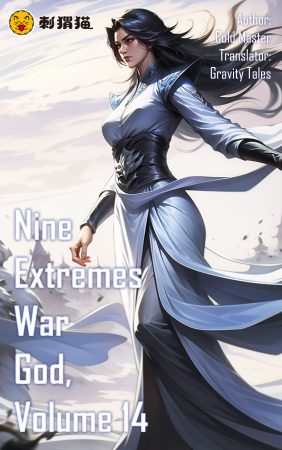Chapter 83: The Panzer IV
Our Discord Server: https://discord.gg/PazjBDkTmW
You can buy coins here to unlock advanced chapters: https://gravitytales.com/coins-purchase-page/
“The British Empire, in principle, supports the German people’s desire for national security and understands the efforts made by the German military to protect their fatherland!…”
“The British government once again reiterates its support for the German people’s actions to emerge from the shadow of war!…”
“We maintain a skeptical attitude towards the so-called Operation Pluto! We firmly believe this is a scam set up by conspirators to destroy peace and affect regional stability!…”
“The British government will continue to trust Germany and will cooperate with Germany in multiple fields! The British Royal Navy will strive to ensure the safety of German merchant ships on the high seas!…”
“God bless the people of both Britain and Germany!…”
That afternoon, the British embassy’s military attaché, Colonel Smith, on behalf of the British government, the British Foreign Office, and the British Royal Navy, held a grand press conference and, under the flash of the reporters’ cameras, issued the above statement.
The Greater Germany Party, having endured humiliation and shouldered a heavy burden, finally welcomed a satisfactory resolution to the “Exposure of Operation Pluto Incident.” The diplomatic barrier that had isolated Germany internationally was broken by Britain, and Germany became a recognized ally of Great Britain.
The politicians who had attempted to use external forces to compel the Reichswehr to hand over its command were dumbfounded. On the day that was later called the “Bloody Night,” more than a dozen of their leaders had died, yet they had gained nothing, not even the most basic sympathy. People called these politicians who sold out their own people traitors, reviling and scorning them to their hearts’ content.
“Now you have won back the advantage,” Tukhachevsky said with a smile, looking at Akado who was pouring him wine at his side. “Drinking your wine is not exactly cheap. Who is going to compensate for our Soviet Union’s losses?”
“Alright! General Tukhachevsky, don’t pretend to be modest after getting a bargain! Technical support for nearly 200 submarines is no small project,” Akado also laughed. “To throw out one plan to cover up another plan, to use the truth to cover up the truth—that is the highest form of intelligence warfare.”
“Stop flattering me!” Tukhachevsky laughed even more happily. “You are the true master of intelligence warfare! You sell one piece of intelligence, yet make two countries simultaneously more dependent on you Germans.”
“Let’s not flatter each other!” Akado said with a wave of his hand and a smile. “You’ve come this time not just to say goodbye. You must have a very important question for me.”
“How did you know?” Tukhachevsky was taken aback.
Pointing to his own temple, Akado smiled. “A hunch.”
“I really want to know, since you are secretly allied with us and are assisting our Soviet Union in infrastructure development, why are you always flirting with the British and selling out communism?” Tukhachevsky looked at Akado with confusion. “You should know that in many cases, the final result of trying to please both sides is being isolated by both sides at the same time.”
He drank the last mouthful of fine wine and stood up. “One day you will suffer because of this kind of playing both sides! My personal advice is for you to choose one side and go all in. Only then can you get true allies.”
After speaking, he walked out of Akado’s office.
“You are wrong, my friend!” Akado also drank the last mouthful of fine wine, savoring it before swallowing. Then he murmured in a voice only he could hear, “Playing both sides indeed won’t get you true friends. But it has another ending: getting rid of all the fake friends at once.”
Akado had originally thought that after settling the “Exposure of Operation Pluto Incident” and sending off Tukhachevsky and his Soviet delegation, he could rest for a while. But this coming year of 1929 was destined to be an eventful one.
In the spring of this year, on April 11, 1929, the de facto ruler of Saudi Arabia, Ibn Saud, his ambitions swelling and increasingly dissatisfied with his country’s resource allocation, launched a “war of unification” against several small surrounding tribes. This war, with the tacit approval and even support of countries like Germany, Britain, and France, continued to expand in scale. And in exchange for more oil, German rifles, British tanks, French steel helmets… countless arms were transported to the Middle East on chartered German “Hercules” transport ships, and exchanged for countless barrels of oil and US dollars shipped to various European countries.
The two battleships Britain had commissioned Germany to build, the Handsome and the Perfect, began to have their keels laid in Kiel. Britain paid 16 million pounds for them, and these two new battleships would adopt new twin-gun turrets and be equipped with precise German fire control systems, to be used to counter the red regime’s Soviet-class battleships.
The British were very unhappy about paying this sum, because the construction cost of the battleship HMS King George V was only 7.4 million pounds. But one piece of intelligence after another from the Baltic Shipyard in Leningrad, Soviet Union, forced Britain to foot the bill for the two battleships that were supposed to have been Germany’s Bismarck and Tirpitz.
But what truly made Akado busy was that the Daimler-Benz company had finally produced a nearly perfect design, making Akado decide to begin trial mass production of the future main battle tank of the German armored forces—the German new model combat vehicle codenamed “Plan Number Four,” the Panzer IV, had finally been designed.
This tank could be said to be an industrial masterpiece of its era. Combined with Akado’s design experience from his past life, this tank could be described as perfect.
It had a single-piece sloped front armor plate, with a thickness reaching a staggering 50mm. The wide hull was supported by six pairs of large-diameter road wheels—compared to the later T-34, it had one more pair of road wheels to cope with the weight change brought by the wider hull.
This brand-new design, completely different from Germany’s previous several tanks, used wide tracks and a layout of large-diameter, interleaved road wheels, which could adapt to more complex muddy combat environments and poor road conditions.
According to the habits of German tank use, this Panzer IV had a total of 5 crew members: driver, radio operator/mechanic, gunner, loader, and commander. This was a very reasonable WWII tank crew configuration, capable of quickly processing information and fighting stably for long periods.
Using a new German tank suspension system improved from the Christie suspension purchased from the United States, the mobility of this tank was greatly improved, and its reliability was also better than the various other suspension systems Germany had been secretly developing.
And to adapt to this suspension system, the large-diameter road wheels, and the sloped front armor plate, a German tank for the first time used a rear-transmission layout. This caused the tank’s turret to be slightly forward, rather than placed in the very center of the hull like the Panzer III. Of course, following Akado’s suggestion, a basket was welded to the very back of the tank turret to store some of the tankers’ miscellaneous items. This practical design also slightly corrected the aesthetic of the German tank’s turret position.
The only thing that made Akado regretful was that this tank still used a gasoline engine, not a diesel engine, for power. Although diesel engines had many advantages and were more powerful and reliable, due to a series of issues including German resources and habits, this tank could only temporarily use a gasoline engine for propulsion—this was a small personal regret for Akado.
Most importantly, this tank had a large and angular welded turret, spacious enough to accommodate a 75mm short-barreled cannon—which in 1929 was enough to destroy any tank already in service. And when necessary, it could be readily replaced with a more powerful tank gun in the future.
So it could be said that this was like buying a pair of pants one size too large, so that you could still wear it when you got fatter. Its engine compartment had an empty reserve fuel tank, its turret was a size larger, making it more comfortable for the crew inside, and its speed was much slower due to the larger hull. But it was still the most powerful super-combat vehicle in Germany’s hands.
And the most valued aspect of this tank was its cheap production cost and simple production process. This tank took about the same number of man-hours to produce as the Panzer III currently in production, its process was simpler, its protection level was greatly improved, and it possessed even more powerful firepower. Most importantly, it also had even more vast room for improvement.
What was somewhat frustrating was that the combat weight of this tank had already exceeded 30 tons, reaching a staggering 33 tons. Its weight could be considered a behemoth among the behemoths of the combat vehicles of this era. In comparison, its predecessor, the Panzer III, only weighed a little over 21 tons.
But Akado still encouraged this breakthrough in weight. He was very clear that in the coming war, a tank weight of 30 to 40 tons was completely reasonable and was the mainstream weight for medium tanks.
Akado was very satisfied with this design. This tank could be described as an enlarged T-34 hull fitted with a Panther tank turret. It combined the advantages of the German tank’s optical systems and cannon power with the simplicity and reliability of Soviet tank manufacturing processes from his past life. Once it appeared on the battlefield, it would be enough to become the template for tank design for the entire world.
And so, Akado ordered the Krupp factory and the Daimler-Benz company to jointly produce this new combat vehicle and personally named this tank the “Panther.” It was estimated that by the beginning of 1933, the Reichswehr would be equipped with 700 of these new combat vehicles, replacing the Panzer III to become the standard-issue equipment of the German armored forces.
Akado, unlike Guderian and many other armored commanders of this era, did not get bogged down in dividing tanks into “support tanks” and “dueling tanks.” Instead, he concentrated on developing “fighter-type tanks” to deal with enemy tanks—as for the job of supporting infantry combat, Akado was prepared to hand it all over to Germany’s new equipment, the “No. 3 Assault Gun.”
But just as Akado was smugly planning the production and equipping of the Panzer IV, a piece of shocking news arrived. This news dealt an incalculable setback to Akado’s thriving cause.












